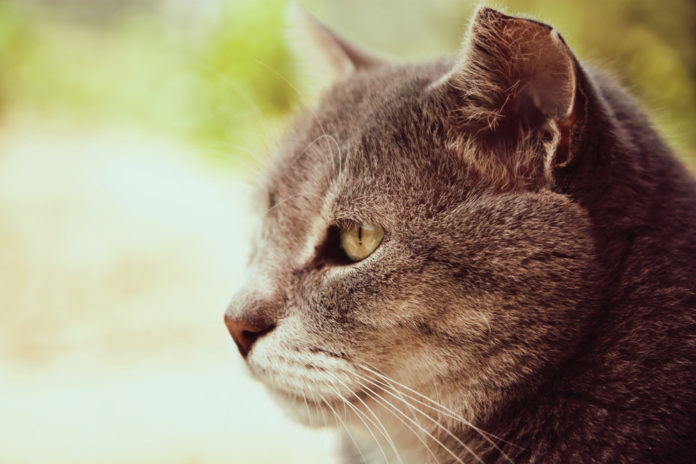Caring for the arthritic cat

Arthritis is one of the more common causes of lameness in cats, especially as they get older. Once you get an accurate diagnosis, a variety of alternative therapies can help ease your kitty’s discomfort.
Arthritis is a common cause of lameness in older kitties. But recognizing it be difficult. Cats are masters at hiding pain and discomfort and can even partially conceal lameness by shifting their weight to non-painful limbs. Clues of possible arthritis in your cat include an inability to jump on the bed or window ledge, a change in behavior or temperament, loss of appetite, and a dull coat from poor grooming. This article looks how the many therapies available to alleviate an arthritic cat’s discomfort.
The most common sites for arthritis in cats are the shoulders, elbows and hips, but any joint can become arthritic, including those in the spine. Long-term goals to manage pain are multimodal in approach. NSAIDs reduce pain and inflammation but can become toxic to cats. A healthy diet free of grains and additives, along with adequate exercise and weight control, are important places to start, but consider the following therapies as well, with help from a holistic or integrative veterinarian.
 Supplements to soothe joints
Supplements to soothe joints
- Glucosamine supports joint cartilage replacement and can provide pain relief. Dosing depends on the cat’s size, but can be anywhere from 250 mg to 500 mg daily. It can take up to two months for blood levels to provide relief.
- Type 2 collagen products taken on an empty stomach can stop joint destruction and pain by giving information back to the immune system that the joints are not an invader; once the attack on the joints stops, pain is relieved.
- Homeopathics are easy to use as many do not have a taste. All acute remedies can be used in combination formulas, including Arnica, Hypericum and Ruta graveolens. It can take six weeks to see any benefits, so persist and be patient. Consider trying homeopathic cytokine therapies as an additional form of treatment; consult a veterinarian who is familiar with the use of cytokines.
- Enzyme therapy using proteolytic enzymes on an empty stomach can reduce pain, improve flexibility and blood flow into joints, and stop joint fibrosis to maintain range of motion.
- Omega-3 fatty acids, particularly EPA and DHA, dosed at 500 mg to 1,000 mg per day, can also reduce pain and inflammation by down-regulating inflammatory prostaglandins. Omega-3s must come from fish because cats lack the enzymes to produce it from vegetable and seed sources.
Physiotherapy and other modalities
- TENS units are tricky, but with veterinary guidance can be safely used at home.
- LED lights in the red frequency — some come with infrared heat — are great to use on joints.
- Lasers increase mitochondria growth and collagen production to help reduce pain and increase flexibility.
- Pulsed electromagnetic therapy is available for home use and comes as a mat that the cat can lie on. The Shumann frequencies between 5 and 10 hertz are the magnetic resonance of the earth and are especially enjoyed by cats that never get outdoors to lie on the ground in the sun. Allow the cat to choose the length of time he needs for pain relief.
- Chiropractic adjustments balance the nerves in the spine and reduce subluxations.
- Acupuncture is useful for cats that will allow a veterinarian to place needles into their acupuncture points. Six or more weekly treatments are necessary. You can alternatively perform acupressure on your cat.
There are many therapies to choose from when dealing with discomfort in an arthritic-cat. It may take time to find the right combination, but it won’t be in vain.



